The debate over the future of the Democratic Party is missing a key finding from political science 📊 October 10, 2021
Because of partisan mega-identities and affective polarization, messaging and position-taking matter much less than they used to
This is a free weekly edition of my personal newsletter. If you like it, please share it. If you want to read more of my work on elections, public opinion, and democracy, consider a subscription to the blog. I write private posts roughly twice a week.
Per the usual schedule for holiday weekends, this newsletter is dated on Sunday but arriving Monday evening. I hope you all had a restful extra day off. I spent the weekend flying home from a hiking trip out west.
In this week’s newsletter, I want to talk about the future of the Democratic Party. Specifically, Ezra Klein has written a great article for the New York Times Opinion section discussing the ongoing debate among Democratic strategists (and on Twitter) over how they can reverse their losses among non-college-educated voters, a trend which threatens their ability to win the Senate and Electoral College in the coming years, while making steady gains with young people. Klein features work by David Shor, a celebrity Democratic data analyst and leading advocate of the so-called “popularist” theory of targeted messaging and political campaigning.
Shor’s position, to sum it up briefly, is that Democrats should talk less about unpopular positions, such as on immigration and especially in regards to racial attitudes, and emphasize their more popular policy proposals, such as drug price negotiations for Medicare coverage and consumer protection from loan sharks. Here’s a chart of the popularity of some select positions from Shor, published in Matthew Yglesias’s newsletter a few weeks ago.
Much of the conversation about Shor’s “popularist” case for Democratic strategy has centered around his urging of candidates to stop talking about defunding the police, which, he argues, cost the Democrats many votes last year, especially among Latinos. As discussed before on this blog, the evidence for the magnitude of that effect is mixed, but it is very likely directionally correct. From 2016 to 2020, Democrats lost vote share among Latinos, especially ones without a college degree. This has paralleled an increase in education polarization in the electorate. (NB: For this past Saturday’s subscribers-only post, we looked at historical trends in education polarization and their implications for Democratic control of the Senate.)
The broader implication of this increased correlation between voting patterns and whether or not a voter has a college degree is that Democrats will have a much harder time winning Senate seats in redder and rural states, where non-college voters, especially but not only whites, are overrepresented compared to states where higher shares of voters live in cities. Shor’s modeling of Senate outcomes in 2022 and 2024 shows that Democrats have slim chances of holding onto power if their share of the vote decreases, as it usually does in midterm elections, and if education polarization and split-ticket voting increases, as they have for almost every election cycle over the past 20 years:
This is a big problem for the Democrats. If they are not careful, they could end up without a Senate majority for a decade or longer. Shor presents an appealing solution: talk about things that, according to him, can assemble a coalition of (some) non-college-whites, degree-holders, minorities, and young people that better resembles the voters who put Barack Obama in the White House in 2008 and 2012, or who supported Bill Clinton in 1992/96.
I. Polarization vs popularism
The major challenges this theory that messaging can save the Democrats faces are two-fold, however. First, non-college-whites — the most conservative voters — now vote much more reliably for Republicans than they used to. In 2012, 40% of the groups’ major-party voters voted for Obama, according to an analysis by Catalist. In 2020, only 37% did. Three percent may sound small, but since the group is the largest in the electorate, it adds up to a ton of votes — that are disproportionally represented in swing states versus solid blue ones.
This makes it harder a priori for a Democratic candidate to replicate Obama’s and Clinton’s successes. And since I haven’t really seen “the goods” on Shor’s theories, I’m forced to think this is a pretty big weakness to the historical comparisons. Indeed, plenty of studies from before 2020 found that messaging generally has very small effects on vote choice, even if you can detect effects on candidate evaluations and other measures. Some work after 2020 has clarified those results somewhat, pointing to mismatches in coverage of the candidates on balance as a place positive interventions could make a difference.
This all being said, I want to say I’m sympathetic to Shor’s case that even if demographics and politics move against the Democrats, they have to do something — and popularism is a good place to start.
But there is another factor that likely severely limits the effects of messaging on policy, which popularism seems to revolve around. That limit is the overall increase v the early 2000s in the strength of group identities and the rising correlation between them and vote choice — what social scientists call social sorting. Rising negative partisanship, which measures how negatively someone rates the average member of the other party, is another huge challenge.
The electorate is much more polarized, in short, than in 1996 or even 2012. It puts more premium on the signals a candidate sends to different groups than it does on the particular policies they do or do not support. Just last week we got a new paper from Gabriel Lenz, author of Follow the Leader?, and Eric Guntermann, one of his colleagues at the UC Berkely, that found that voters who learned about candidates’ preferences on a variety of issues did not change their minds on who to vote for. Instead, they changed their desired policy on those issues.
II. How should Democrats think about the role of race and racial attitudes?
The “Defund the Police” example that Shor often cites (again, especially in relation to Latinos) is perhaps a special case of his “popularism” theory. That’s because it is less a policy proposal and more a signal to voters of which groups candidates align with — whether they share a person’s identities or not. But even then, how much would an anti-“defund” message from the average Democratic House member have helped them? According to friend of the blog Alexander Agadjanian, a PhD student at UC Berkely, it may have decreased vote-switching from 2016 to 2020 among whites by 10%. Given the small number of switchers, that’s a fraction of a percentage point of an effect. Further, priming of other group identities had equal or larger effects on vote switching, none larger than a point on vote share in aggregate.
But one note is that the “Defund” issue is undoubtedly correlated with broader racial attitudes (NB: that could be why we saw an increase in the correlation between vote choice and an individual’s position on the racial resentment scale last year). Accordingly, that makes popularism’s prescriptions correlated with ideological identity, too. One pollster for Equis Research clarified to me that their post-election report actually found that the rising education polarization among Latinos in 2020 was a product of conservative Latinos starting to vote more like conservatives, and less like Latinos as a monolith. Here, we see an even larger problem for Democrats who see messaging as their solution to winning back voters: How many elected Democrats that would really call themselves “conservatives” will win their primaries? How many are there, period?
Attitudes about race have also become increasingly important to how Americans vote — and that’s true across races. In 2020, voters were more divided by how they felt about racial equality and equity than they were by their racial identities. It is doubtful that Democrats can win back many of those voters by doing what they normally do: focusing on policy. A damning piece of evidence? Between 2016, when Clinton focused mainly on Trump’s personal failings, to 2020, when Biden’s campaign was substantially more policy-focused, racial attitude polarization increased.
There is some hope for Democrats on this front. There is empirical evidence that the so-called “race-class narrative” in campaign messaging, which has candidates and advertisements emphasize that elitism, inequality, and classism hurt people regardless of their race, class, color, or creed (sound familiar?) can simultaneously reduce the salience of racial attitudes to voting and decrease education/class/ideological polarization. The race-class narrative strictly dominates race- or class-based messaging on its own. Maybe the solution isn’t to stop talking about race and Defunding the Police, but to try a new strategy that reshapes the divisions entirely.
You should really read the whole report here.
III. The future of the Democratic party
I am not ready to say that group identities and affective polarization are the nails in popularism’s coffin. As I said at the outset, if you accept the Democrats’ structural problems, you have to agree that making some effort to win back working-class voters (especially in the Midwest) is worth trying. Yet that’s true only if whatever Shor’s proposing also doesn’t turn away voters on the other end of the spectrum. Given the strength of ideological polarization and social sorting, that might not be so large an issue.
. . .
So, where do we stand? Let me summarize this post in five points:
Doing and saying popular stuff is good!
But popularism as a messaging strategy, especially on policy positions, will have limited utility in the face of strengthening group identities and rising political polarization.
Racism and “racial conservatism” in the electorate are particularly hard forces for Democrats to combat, especially as GOP elected officials have made them integral to the standard Republican identity in recent decades.
Yet something must be done to blunt the impact of structural biases in the Senate and Electoral College.
If reform isn’t that solution, “popularism” seems like a reasonable place to start.
I should say I’m on Shor’s broader side here. Our institutions are unfair and something needs to give. If Democrats can find a sweet spot between winning more non-college-educated and keeping the others they already firmly have, they could avoid doom by the confluence of polarization and our substandard institutions.
But this will probably be harder to pull off than some are letting on.
Posts for subscribers
If you like this post, please share it — and consider a paid membership to read more in-depth posts from me. Subscribers received three extra exclusive posts over the last week, including:
A short post on books I recommend to people who want to learn more about politics through the lens of political science
A post on social sorting posing a threat to democracy, recapping some of my published writing and including supplemental reporting from this year’s American Political Science Association conference
The aforementioned piece on popularism, which covered the extent of education polarization now and the utility of political modeling
Thanks for reading
That’s it for this week. Thanks so much for reading. If you have any feedback, you can reach me at this address (or respond directly to this email if you’re reading in your inbox). I love to talk with readers and am very responsive to your messages.
A final reminder: For potential subscribers who are sticker shook, email me and we’ll set you up with a free trial. I also have cheaper subscriptions for students.

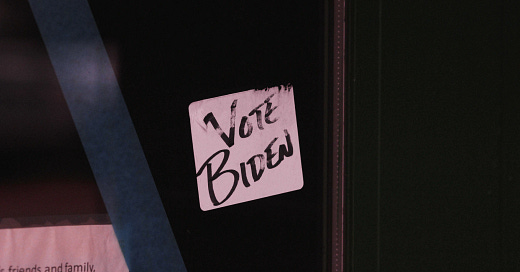



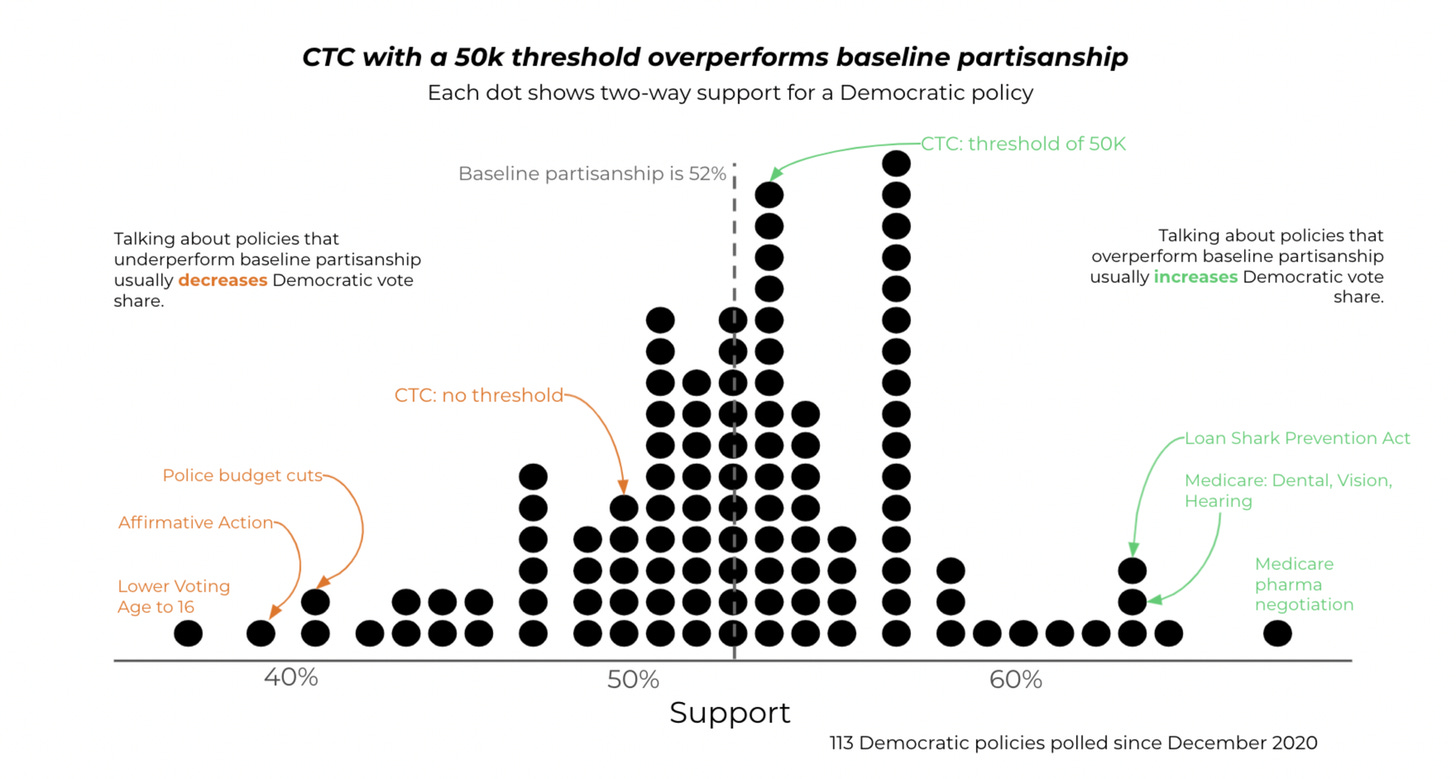
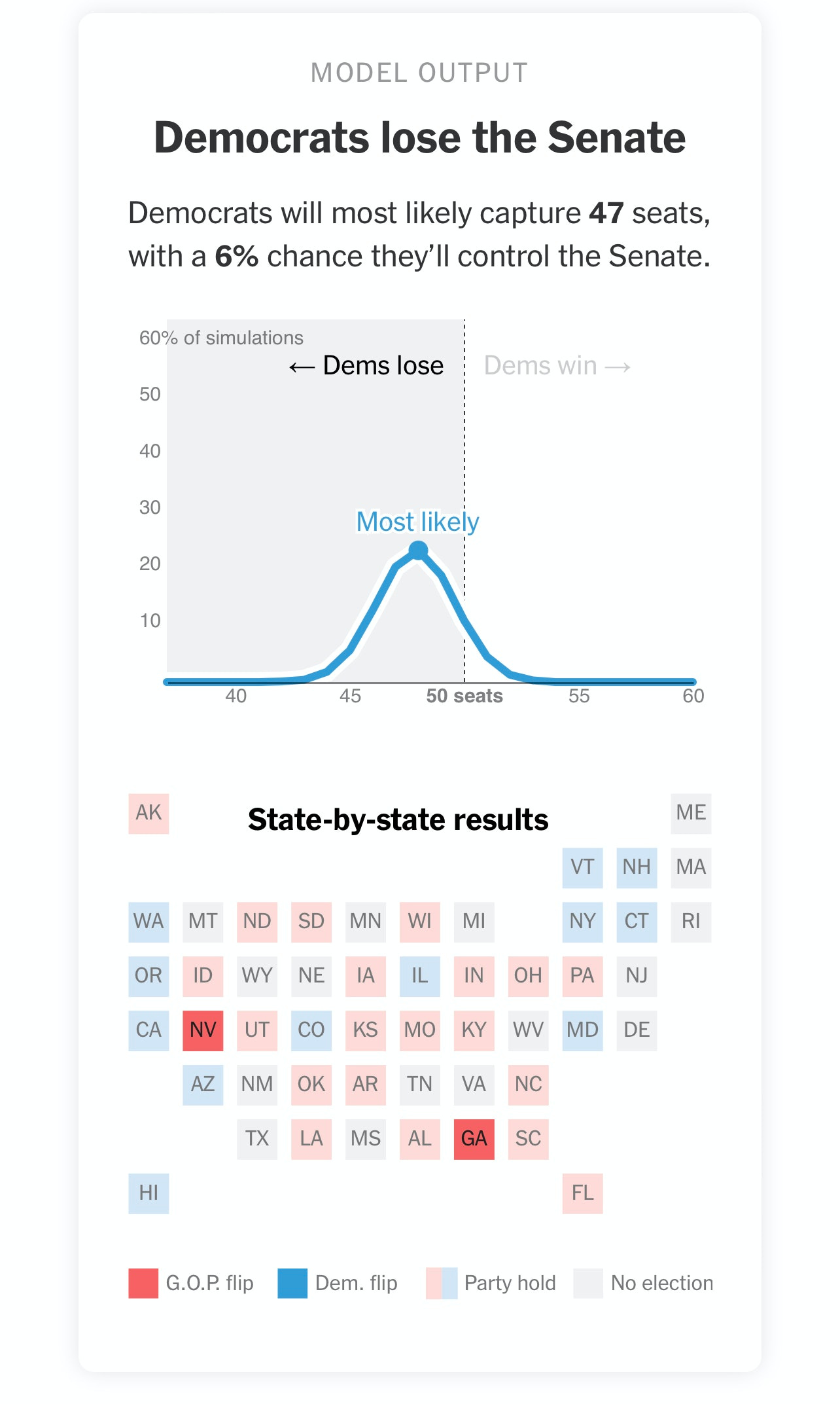
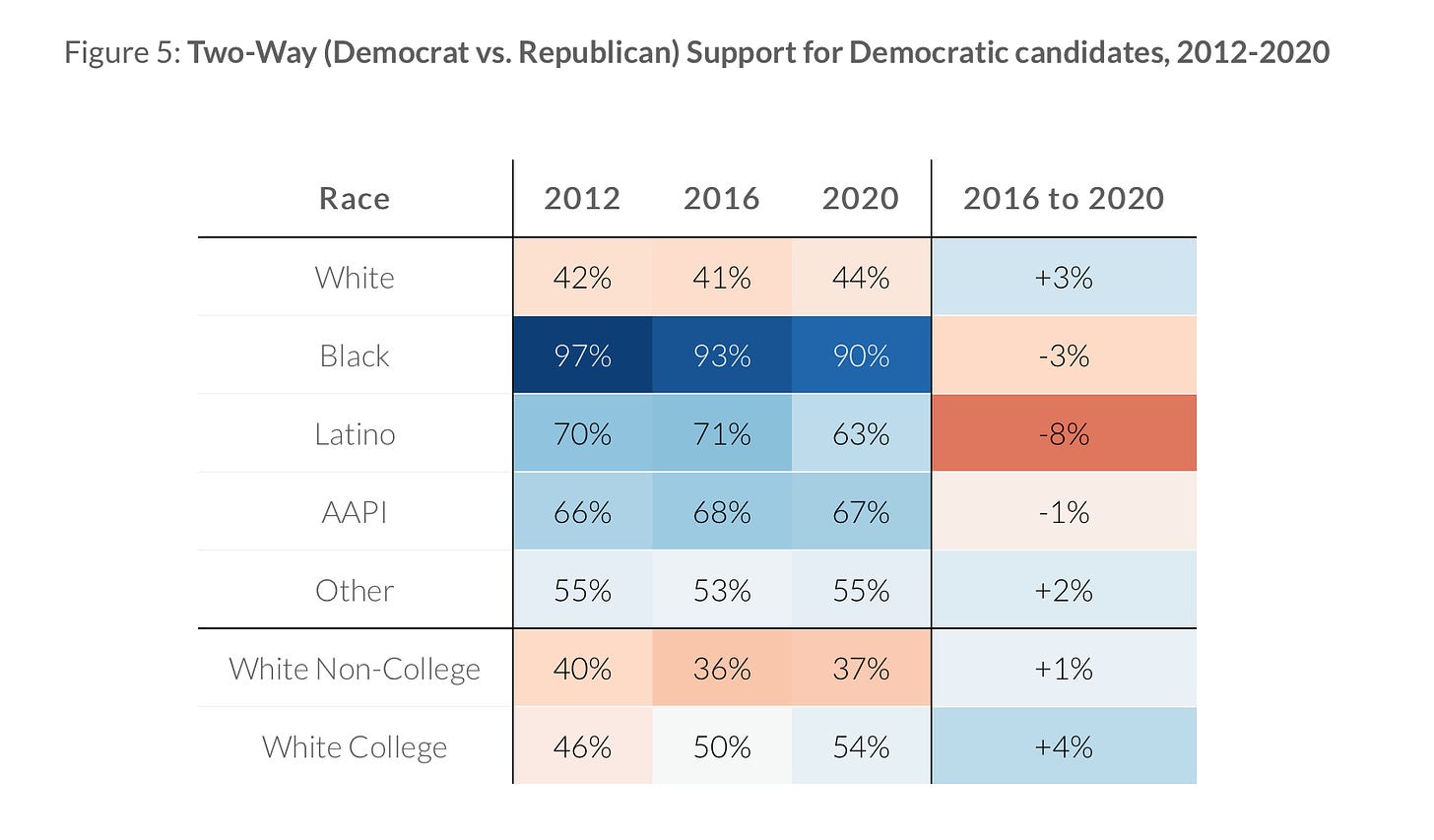

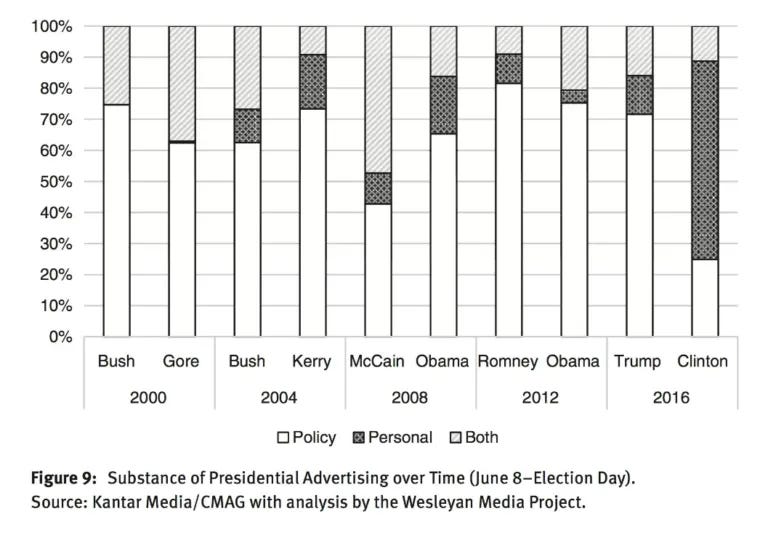

I think the case for popularism is basically a necessary but not sufficient one.
But, I am surprised that given the increase of educational polarization even among Black voters, no one has brought up conservative views on traditional gender/family roles.
Always looked like a factor in Warren's poor general election polling, for example. Do you have any numbers on that?